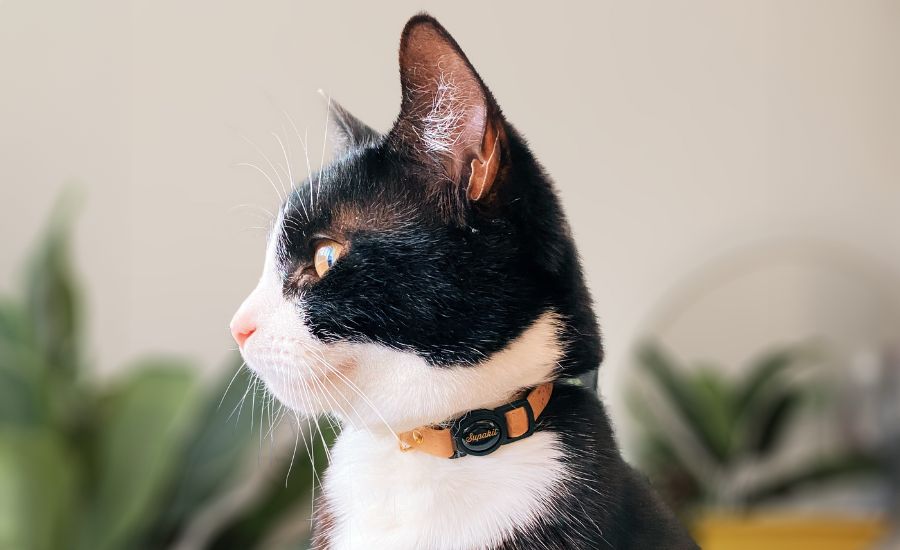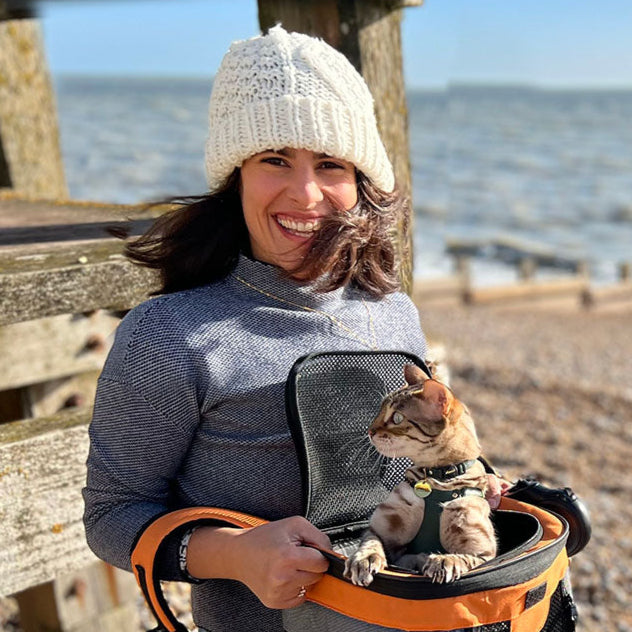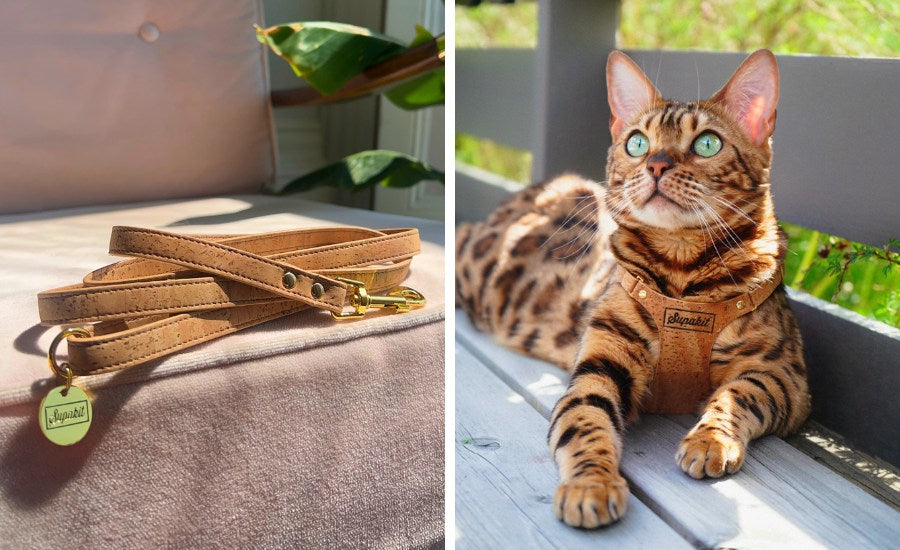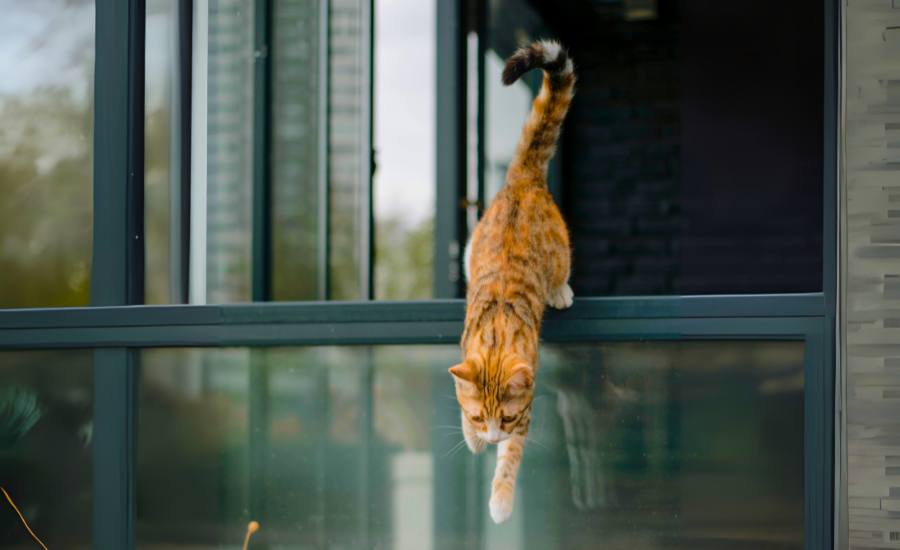My Cat Keeps Losing Their Collar (SOLVED)
Does your cat keep losing their collar? Don’t worry, we’ve got you! If your cat won't keep a collar on, you're not alone. However, before you consider giving up on cat collars altogether or opting for collars without a breakaway safety feature included, we're here to tell you - collar losses are fixable!
In this article, we'll explore the main reasons behind breakaway cat collar losses and provide you with practical fixes to ensure your cat's collar is secure, comfortable, and most importantly, stays on!
Scroll down to read our comprehensive guide or click below to watch on YouTube.
Why is my cat losing their collar?
Losing your cat's collar can be a frustrating experience, but understanding why it happens is the first step towards finding a solution. Let's look at the reasons behind collar losses and the simple solutions to keep your cat's breakaway collar securely in place.
Reason #1: Your Cat is Uncomfortable in Their Collar
Collar discomfort is a significant factor contributing to collar losses, accounting for approximately 90% of cases that we see here at Supakit. Our cats are smart cookies, and when they're not comfortable in their collar, they'll soon find ingenious ways to take it off!
You might notice that your cat keeps removing their collar, or you might see other signs of discomfort like trying to get the collar into their mouth, using a back leg to scratch at it, or rubbing their neck persistently on things that they pass.
Let's look at the factors that can make your cat uncomfy, and how to solve them to stop your cat from taking off their collar:
1a. Incorrect Fit
A collar that is either too tight or, more commonly, too loose can cause discomfort. A loose collar can move around and rub against your cat's neck, making them hyper-conscious of it.

Solution: Achieve a perfect fit. You don't want the collar to be too tight, pressing into their neck in any way. But you also don't want it to be too loose. Follow your manufacturer's recommendations but for a Supakit collar we advise a one-fingertip fit. This means that you should be able to slide one fingertip between your cat's fur and the collar when it's on.
Related: How To Fit Your Supakit Collar
1b. Too Fast an Introduction
Introducing a collar too suddenly can unsettle your cat. If they're not used to the sensation of wearing a collar, they may fuss and try to remove it.

Solution: Gradually introduce the collar to your cat. Give them time to adapt to the new accessory. You can follow our collar introduction guide to help with this process, and if they've already had experiences with collars in the past and decided they are not a fan, you might want to check out our 'help my cat hates their collar' remedial guide!
1c. Uncomfortable Material
A collar that is made of an uncomfortable material that is itchy or scratchy can cause discomfort for your cat.

Solution: Choose collars made from soft and smooth materials that are gentle on your cat's fur. In particular, look for collars with a soft material on the inside, not just the outside, as this is the part which will be in contact with your cat's neck. Supakit collars are also made from natural materials which smell and feel right to your cat, and can help them feel instantly at ease.
1d. Heavy or Bulky Collar
Collars with excess weight or bulkiness can be uncomfortable for your cat, particularly if there are large accessories added. The added weight can make them more aware of the collar's presence and may lead to their attempts to remove it.

Solution: Opt for lightweight collars, and be sparing with accessories. Introduce accessories gradually to allow your cat to adapt. If you're using a tracker, choose a small and slimline version - if you're using an Apple AirTag you might want to check out our range of AirTag holders, specially for cats!
Reason #2: The Collar Is Getting Snagged
Another common reason for a cat that keeps losing their collar is that the collar is getting snagged. It is more common in outdoor cats but can occur with indoor cats too. It happens when your cat passes near to an object (e.g. a branch of a bush) that slides between the collar and their body. If they are trapped with their body weight acting on the collar, this will trigger the breakaway buckle, which is good for your cat's safety - but not so good for your wallet or their ability to wear a collar long-term!
Solution: Fortunately, the solution to snags is simple - by achieving a correct collar fit you can make sure that your cat's collar isn't dangling away from their body and presenting an open window for things to get caught in between.
For a Supakit collar, you can check your cat's collar fit by sliding one fingertip between the collar and your cat’s neck. If you cannot do this with ease, slacken the collar. If there is more than a fingertip's gap between the neck and collar, you should tighten the collar.
Additionally, look for supple collars that conform to your cat's neck shape as these will reduce the chance of any gaps opening up between the collar and their body for things to pass between.
Reason #3: Outgrowing The Kitten Collar Weight Range
If you initially chose a Supakit collar with a kitten buckle for your feline companion but have since noticed collar losses, it might be due to your cat outgrowing the weight range for the kitten buckle.
Our 'kitten' breakaway buckle is thoughtfully designed to provide safety for the tiniest of cats, making it perfect for small, lightweight kittens. However, as your cat grows and surpasses 2.5kg/5.5lbs, the sensitive 'kitten' buckle can start triggering and falling off during their energetic play.
If you've observed that your cat used to wear their Supakit kitten collar without issues but it's now frequently coming off, it's a strong indication that they've crossed the weight threshold.

Solution: To determine if your cat has outgrown their kitten collar, you can easily weigh them at home. First, step on a scale while holding your cat, note the weight. Then, step on the scale without your cat, and subtract the two figures.
If your cat's weight is 2.5kg / 5.5lbs or above, it's time to transition to a collar with our sturdier 'regular' breakaway buckle, ensuring it stays securely in place during their grownup adventures!
Reason #4: Conflict With Other Cats
Another important factor to consider is whether your cat may be involved in actual, non-playful fights with other cats in your home or neighbourhood.
Solution: Regrettably, this is the most challenging factor to address with the collar alone because it's crucial for your cat's safety that the collar breaks away if a rival cat grabs hold of it with a claw, for instance. While checking the fit to ensure the collar is as snug as possible is advisable, resolving conflicts stemming from aggressive interactions between cats often requires a more comprehensive approach.
In such cases, we strongly recommend seeking guidance from a feline behavior expert who can provide insights and strategies to help alleviate the conflicts and ensure the well-being of all cats involved.
How to keep a collar on a cat
By addressing these factors and following the suggested solutions, you can significantly reduce the likelihood of your cat losing their breakaway collar. Remember that persistence and patience are key when introducing collars to your cat. With the right fit, collar design and introduction, you'll find that your cat will forget that their collar is even there - and therefore keeps it on!
Best Collar For Cats That Often Lose Them

The best type of collar for cats that often lose them is a comfortable, lightweight collar that your cat hardly knows they’re wearing!
Supakit began with a kitty that lost her collar constantly - you can read our origin story here. We studied why cats lost their collars and discovered it was almost always due to a cat actively removing an uncomfy collar or getting their poorly fitting collar snagged as they explored. So we worked to develop cat collars that are so comfy your cat never wants to take it off, and that fit so perfectly to your cat’s unique shape that there’s minimal risk of it getting snagged as they explore. Made for both indoor and outdoor cats.
Shop Supakit Breakaway Cat Collars
Related:







